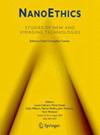Reflections on Perspectives of Transhumanism, Buddhist Transhumanism, and Buddhist Modernism on the Self
IF 1.5
4区 哲学
Q3 ETHICS
引用次数: 0
Abstract
Abstract A claim made by Buddhist or Buddhism-affine scholars such as Michael LaTorra and James Hughes is that transhumanism, neuroscience, and the teachings of Buddhism are compatible because they aim to alleviate suffering and pain and attain a stable state of happiness. This claim can be challenged. At first glance, the approach seems valid, because since the 1980s there have been dialogues and scientific collaborations with representatives of Tibetan Buddhism and scientists on the topics of neuroscience, consciousness, ethics and technology, and in this context new interpretations of Buddhist thought have emerged such as ‘Buddhist modernism’ (E. Thompson). In this discussion note, however, two main arguments are advanced as to why the claim and terminology of Buddhist transhumanism are difficult to reconcile with Buddhist terminology, values, and methods: (1) the difference between the use of such methods as meditation and contemplation and the application of so-called human enhancement technologies (2) and differences concerning self-understanding in Western science and Buddhism.超人类主义、佛教超人类主义与佛教现代主义自我观的思考
Michael LaTorra和James Hughes等佛教或佛教学者提出了一个主张,即超人类主义、神经科学和佛教教义是兼容的,因为它们的目标是减轻痛苦和痛苦,达到稳定的幸福状态。这种说法可以受到质疑。乍一看,这种方法似乎是有效的,因为自20世纪80年代以来,藏传佛教的代表和科学家就神经科学、意识、伦理和技术等主题进行了对话和科学合作,在这种背景下,对佛教思想的新解释出现了,比如“佛教现代主义”(E. Thompson)。然而,在这个讨论笔记中,关于为什么佛教超人类主义的主张和术语很难与佛教的术语、价值观和方法相协调,提出了两个主要论点:(1)冥想和沉思等方法的使用与所谓的人类增强技术的应用之间的差异(2)以及西方科学和佛教中关于自我理解的差异。
本文章由计算机程序翻译,如有差异,请以英文原文为准。
求助全文
约1分钟内获得全文
求助全文
来源期刊

Nanoethics
HISTORY & PHILOSOPHY OF SCIENCE-
CiteScore
2.90
自引率
7.70%
发文量
18
期刊介绍:
NanoEthics: Ethics for Technologies that Converge at the Nanoscale will focus on the philosophically and scientifically rigorous examination of the ethical and societal considerations and the public and policy concerns inherent in nanotechnology research and development. These issues include both individual and societal problems, and include individual health, wellbeing and human enhancement, human integrity and autonomy, distribution of the costs and benefits, threats to culture and tradition and to political and economic stability. Additionally there are meta-issues including the neutrality or otherwise of technology, designing technology in a value-sensitive way, and the control of scientific research.
 求助内容:
求助内容: 应助结果提醒方式:
应助结果提醒方式:


